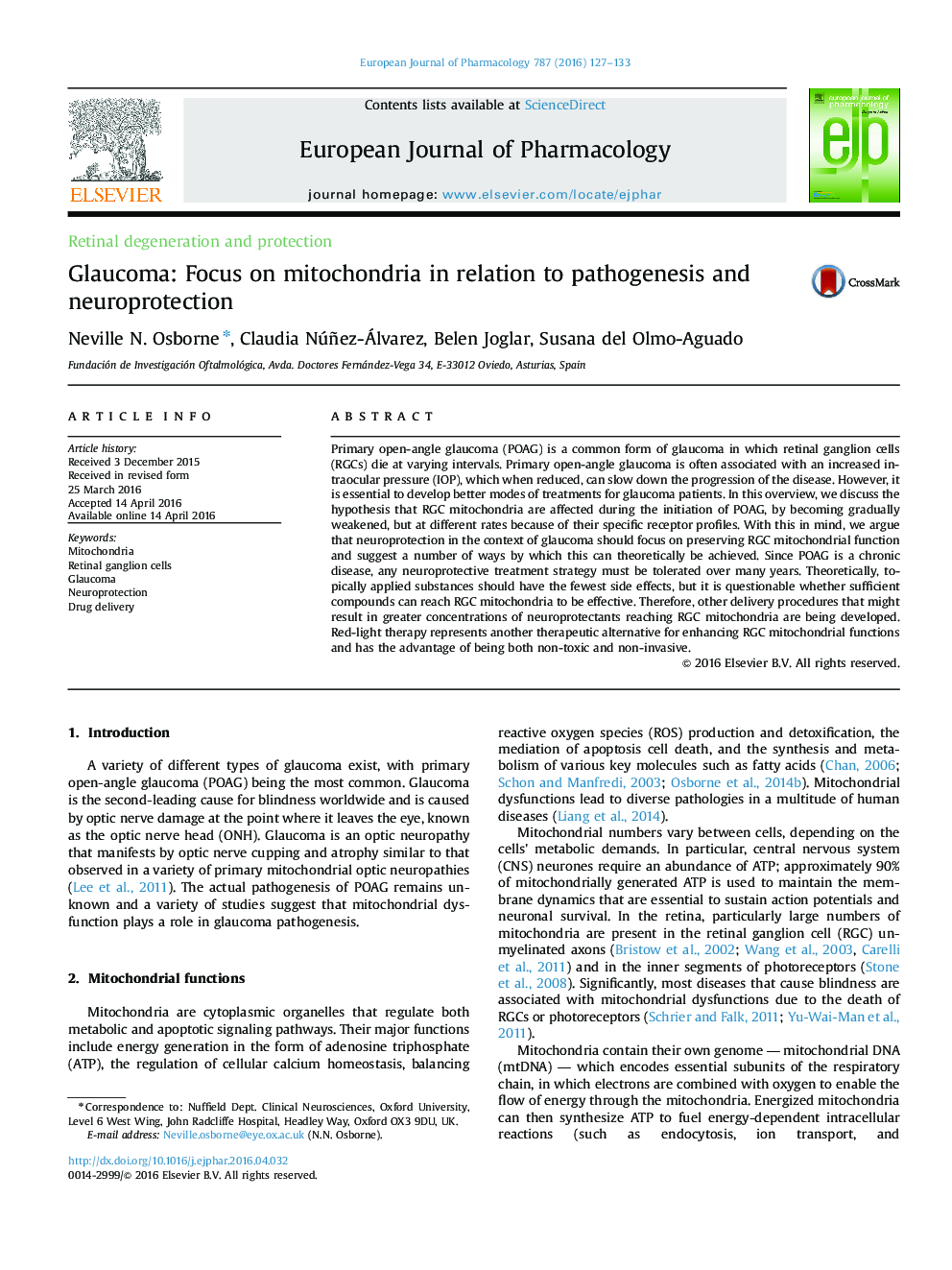| Article ID | Journal | Published Year | Pages | File Type |
|---|---|---|---|---|
| 5826727 | European Journal of Pharmacology | 2016 | 7 Pages |
Abstract
Primary open-angle glaucoma (POAG) is a common form of glaucoma in which retinal ganglion cells (RGCs) die at varying intervals. Primary open-angle glaucoma is often associated with an increased intraocular pressure (IOP), which when reduced, can slow down the progression of the disease. However, it is essential to develop better modes of treatments for glaucoma patients. In this overview, we discuss the hypothesis that RGC mitochondria are affected during the initiation of POAG, by becoming gradually weakened, but at different rates because of their specific receptor profiles. With this in mind, we argue that neuroprotection in the context of glaucoma should focus on preserving RGC mitochondrial function and suggest a number of ways by which this can theoretically be achieved. Since POAG is a chronic disease, any neuroprotective treatment strategy must be tolerated over many years. Theoretically, topically applied substances should have the fewest side effects, but it is questionable whether sufficient compounds can reach RGC mitochondria to be effective. Therefore, other delivery procedures that might result in greater concentrations of neuroprotectants reaching RGC mitochondria are being developed. Red-light therapy represents another therapeutic alternative for enhancing RGC mitochondrial functions and has the advantage of being both non-toxic and non-invasive.
Related Topics
Life Sciences
Neuroscience
Cellular and Molecular Neuroscience
Authors
Neville N. Osborne, Claudia Núñez-Álvarez, Belen Joglar, Susana del Olmo-Aguado,
